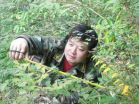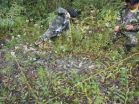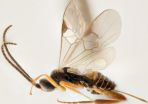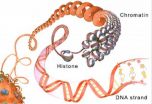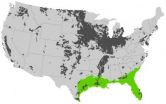(Press-News.org) Recovering from natural disasters usually means rebuilding infrastructure and reassembling human lives. Yet ecologically sensitive areas need to heal, too, and scientists are pioneering new methods to assess nature's recovery and guide human intervention.
The epicenter of China's devastating Wenchuan earthquake in 2008 was in the Wolong Nature Reserve, a globally important valuable biodiversity hotspot and home to the beloved and endangered giant pandas. Not only did the quake devastate villages and roads, but the earth split open and swallowed sections of the forests and bamboo groves that shelter and feed pandas and other endangered wildlife. Persistent landslides and erosion exacerbated the devastation.
Typically such natural damage is assessed with remote sensing, which can be limited in fine details. Scientists at Michigan State University (MSU) and in China embarked on a dangerous boots-on-the-ground effort to understand how well the trees, bamboo and critical ground cover were recovering. Their work, which is relevant to disaster areas worldwide, is reported in this week's Forest Ecology and Management.
"Across the world, people are investing billions of dollars to protect valuable natural areas, as well as making enormous investments in restoring such areas after natural disasters," said Jianguo "Jack" Liu, director of MSU's Center for Systems Integration and Sustainability, and a co-author. "It's important we develop ways to understand the fine points of how well recovery efforts are working, so we can direct resources in the right places effectively."
Jindong Zhang, a post-doctoral research associate in CSIS, spent several months over a period of four years in Wolong dodging landslides, mudslides and rubble strewn roads to survey forest recovery at a finer scale than can be observed from satellites and getting a better handle on the nuances of tree species, height and soil conditions. The data was then combined with that from satellite imagery.
What was found was that much of the natural areas were on the road to recovery, and that China's $17 million effort at replanting native trees and bamboo were helping in areas handicapped by poor soil and growing conditions.
They also noted that such efforts could benefit from more targeting of areas most favored by pandas. The replanting efforts were done by local residents.
"We witnessed pretty intense periods when it seemed like everyone in the target areas were out planting," said co-author Vanessa Hull, a CSIS doctoral candidate who studies panda habitat in Wolong. "My field assistants also joined in on the village-wide efforts. It was pretty neat to see."
But a potential downside to such efforts was that most of the available labor was near villages, and pandas shy from human contact. That meant that some of the best assisted-forest recovery was in areas not favored by pandas. Hull noted, however, that there could be an upside to that. Healthier forests could mean local residents have less need to venture into more far-flung panda-friendly forests.
"We wanted to know if the benefit of this effort was matching up to the investment – which was significant," Hull said. "It's an important question, and the world needs good ways to evaluate it as natural disasters are growing in frequency and intensity."
INFORMATION:
Besides Liu, Zhang and Hull, "Natural Recovery and Restoration in Giant Panda Habitat after the Wenchuan Earthquake" was written by Wu Yang,, a former CSIS doctoral student now at Conservation International; Hemin Zhang, Jinyan Huang, Shiqiang Zhou and Yan Huang of the China Conservation and Research Center for the Giant Panda in Wolong; and Zhiyun Ouyang and Weihua Xu of the State Key Laboratory of Urban and Regional Ecology, Research Center for Eco-environmental Sciences, Chinese Academy of Sciences in Beijing.
The research was funded by the National Science Foundation, NASA, the MSU Distinguished Fellowship Program, the William W. and Evelyn M. Taylor International Engagement Program, the National Natural Science Foundation of China, the State Key Laboratory of Urban and Regional Ecology, Research Center for Eco-Environmental Sciences, Chinese Academy of Sciences, and the Giant Panda International Collaboration Fund.
Gauging what it takes to heal a disaster-ravaged forest
2014-02-24
ELSE PRESS RELEASES FROM THIS DATE:
Penn researchers 'design for failure' with model material
2014-02-24
When deciding what materials to use in building something, determining how those materials respond to stress and strain is often the first task. A material's macroscopic, or bulk, properties in this area — whether it can spring back into shape, for example — is generally the product of what is happening on a microscopic scale. When stress causes a material's constituent molecules to rearrange in a way such that they can't go back to their original positions, it is known as "plastic deformation."
Researchers at the University of Pennsylvania have devised a method to study ...
Parents' attitudes about helping their grown children affect their mental health
2014-02-24
Older parents frequently give help to their middle-aged offspring, and their perceptions about giving this help may affect their mental health, according to a team of researchers.
"We usually view the elderly as needy, but our research shows that parents ages 60 and over are giving help to their children, and this support is often associated with lower rates of depression among the older adults," said Lauren Bangerter, Ph.D. student in human development and family studies, Penn State.
The team -- which included researchers at Penn State, the University of Texas ...
Specialized cognitive therapy improves blood sugar control in depressed diabetes patients
2014-02-24
Although maintaining good blood sugar control is crucial for avoiding complications of diabetes, it has been estimated that only about half of patients are successful in meeting target blood glucose levels. The prevalence of depression among diabetes patients – up to twice as high as in the general population – can interfere with patients' ability to manage their diabetes. Now a group of Massachusetts General Hospital (MGH) investigators report that a program of cognitive behavioral therapy that addresses both mood and diabetes self-care led to improved blood sugar control ...
Almost 200 new species of parasitoid wasps named after local parataxonomists in Costa Rica
2014-02-24
An inventory of wild-caught caterpillars, its food plants and parasitoids, has been going on for more than 34 years in Area de Conservación Guanacaste (ACG), a protected area of approximately 1200 km2 in northwestern Costa Rica. As a result, more than 10,000 species of moths and butterflies are estimated to live in ACG. Their caterpillars are in turn attacked by many parasitoid wasps, also numbering thousands of species. However, most of those wasps have never been described and remain unknown.
For the past few years researchers from Canada, Costa Rica and the United ...
New technology detect cellular memory
2014-02-24
Cells in our body are constantly dividing to maintain our body functions. At each division, our DNA code and a whole machinery of supporting components has to be faithfully duplicated to maintain the cell's memory of its own identity. Researchers at BRIC, University of Copenhagen, have developed a new technology that has revealed the dynamic events of this duplication process and the secrets of cellular memory. The results are published in Nature Cell Biology.
In 2009, two women at BRIC, University of Copenhagen joined forces to develop a new technology that could elucidate ...
Researchers make the invisible visible
2014-02-24
The 2003 development of the so-called hyperpolarization technique by a Danish research was a groundbreaking moment that made it possible to see all the body's cells with the help of a new contrast agent for MRI scans. Researchers from Aarhus have now taken another big step towards understanding the body's cells and with it also the development of diseases:
"With the hyperpolarization method, sensitivity to specific contrast agents is up to 10,000 times higher than with a traditional MRI scanning. What we have now documented is that with the hyperpolarization MRI scanning ...
Team converts sugarcane to a cold-tolerant, oil-producing crop
2014-02-24
CHAMPAIGN, Ill. — A multi-institutional team reports that it can increase sugarcane's geographic range, boost its photosynthetic rate by 30 percent and turn it into an oil-producing crop for biodiesel production.
These are only the first steps in a bigger initiative that will turn sugarcane and sorghum – two of the most productive crop plants known – into even more productive, oil-generating plants.
The team will present its latest findings Tuesday (Feb. 25) at the U.S. Department of Energy's ARPA-E Energy Innovation Summit in Washington, D.C.
"Biodiesel is attractive ...
Pointing is infants' first communicative gesture
2014-02-24
VIDEO:
Catalan researchers have studied the acquisition and development of language in babies on the basis of the temporary coordination of gestures and speech. The results are the first in showing...
Click here for more information.
Catalan researchers have studied the acquisition and development of language in babies on the basis of the temporary coordination of gestures and speech. The results are the first in showing how and when they acquire the pattern of coordination ...
The chemistry of Sriracha: Hot sauce science
2014-02-24
WASHINGTON, Feb. 24, 2014 — Forget ketchup and mustard — Sriracha might be the world's new favorite condiment. Beloved by millions for its unique spicy, garlicky, slightly sweet flavor, the chemistry of "rooster sauce" is the subject of the American Chemical Society's latest Reactions video. The video is available at http://youtu.be/U2DJN0gnuI8.
INFORMATION:
Subscribe to the series at Reactions YouTube, and follow us on Twitter @ACSreactions to be the first to see our latest videos.
The American Chemical Society is a nonprofit organization chartered by the U.S. ...
Uninsured adolescents and young adults more likely to be diagnosed with advanced cancer
2014-02-24
ATLANTA – February 24, 2014 – A new American Cancer Society study shows that uninsured adolescents and young adults were far more likely to be diagnosed with late-stage cancer, which is more difficult and expensive to treat and more deadly, compared to young patients with health insurance. The study, published early online, will appear in the March issue of the journal CANCER.
The study's authors says their data suggest a way forward for cancer control efforts in the adolescent and young adult (AYA) population, a group that has benefited the least from recent progress ...
